Rules for growing eggplants in a greenhouse and open field: the secrets of getting a high yield
Looking to grow a large eggplant crop in a greenhouse or open field? Have you tried it, but the result did not please you?
Then it will be useful for you to read this material, from which you will learn all the most important nuances and secrets for caring for eggplants, which will help you get a rich harvest of "blue" ones.
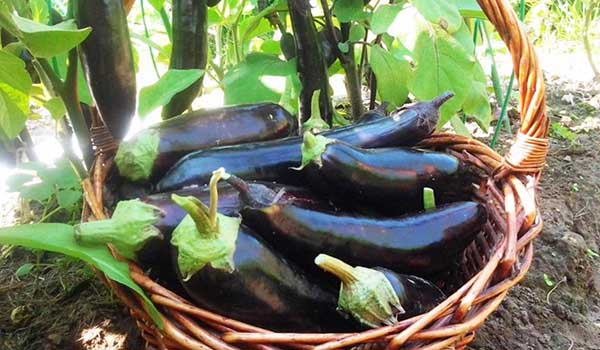
Content
Proper cultivation of eggplant seedlings
In the following materials you will find all the necessary information about the timing and rules for growing eggplant seedlings at home:
- when to sow eggplant seeds for seedlings;
- how to sow and care for seedlings correctly before planting in the ground;
- separate material about picking.
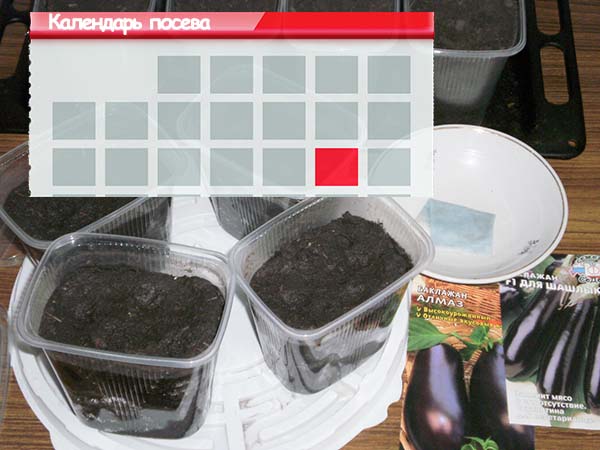
Planting seedlings in a greenhouse and open ground
Before planting eggplant seedlings in a permanent place (in open ground or a greenhouse), you need them temper... To do this, the seedlings must be taken out into the street (for example, in the same greenhouse) every day, for 5-7 days, increasing the period of their stay in the fresh air every day.
Eggplant should be planted only after the air and soil will warm up well (the soil temperature at the planting depth should be at least +12, and preferably +15 degrees).
As for the approximate dates, eggplants can be planted in the Middle Lane (Moscow region) to the greenhouse in the first half of May, and to the open ground only from the second half of May (when the threat of returnable spring frosts has passed).
Appearance of eggplant seedlings at the time of planting in the ground:
- age - 60-70 days (on average);
- at least 6 true leaves;
- height - 15-20 cm.
A bed under the eggplant must be well fertilized with organic matter (compost, humus). The culture loves loose and fertile soil.
As for the choice of a place for a garden, then eggplants should be in the greenhouse as much as possible. closer to the aisle, i.e. to the draft (so that the bushes are well ventilated), in other words, they should not be planted close to the greenhouse wall.
The very procedure for planting eggplant seedlings in an open or closed ground (greenhouse) is standard: you transfer the seedlings together with an earthen lump into prepared planting holes (without deepening, flush with the ground, as they grew in cups), and then spill them well (or plant them in the mud , i.e. spill before landing).
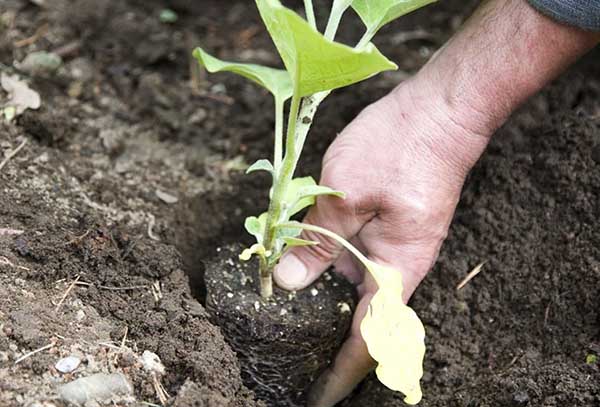
By the way! Some gardeners recommend spraying the plants with one of the growth regulators (Epin or Zircon) a day before transplanting or after planting in order to neutralize possible stress.
Video: planting eggplant seedlings in open ground
Eggplant care in the greenhouse and open field: basic rules for growing
Temperature regime
Eggplant is the most thermophilic culture (from the nightshade family), even more so than peppers, and even more so tomatoes. Therefore, in the conditions of the Middle zone (Moscow region), especially the North-West (Leningrad region), eggplants need grow in a greenhouse.
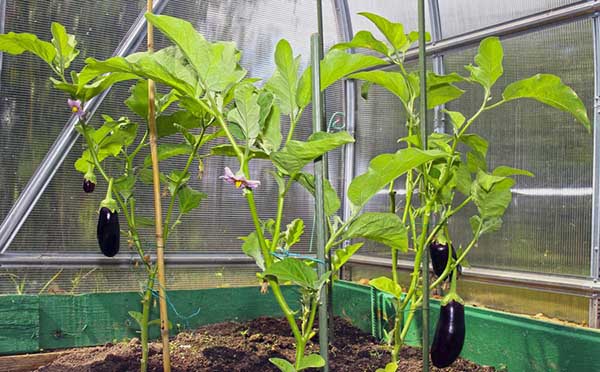
The fact is that if the weather is cool and humid (the nights are cold), the eggplants will simply not be able to tie normally (the pollen will get wet).
If there is no choice and you have to grow in the open field, then you can at least do arc greenhouse (use spunbond or other white agrofibre as a covering material).
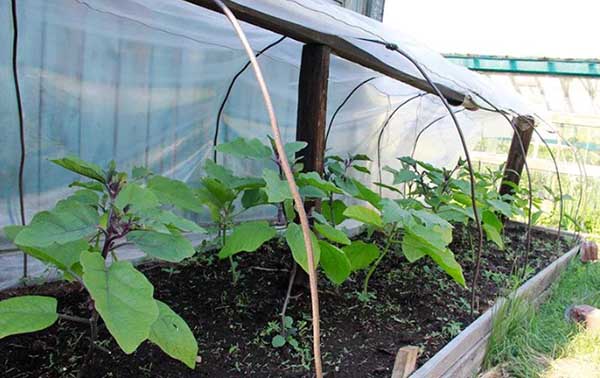
Tying
As soon as the ovaries form in the eggplant, you will need to quickly tie the bushes to the supports.
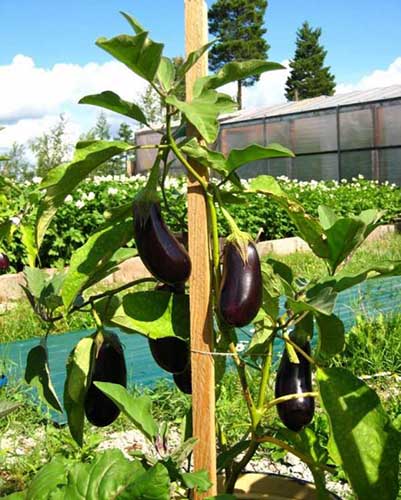
Watering
Eggplants love abundant watering and relatively high humidity.
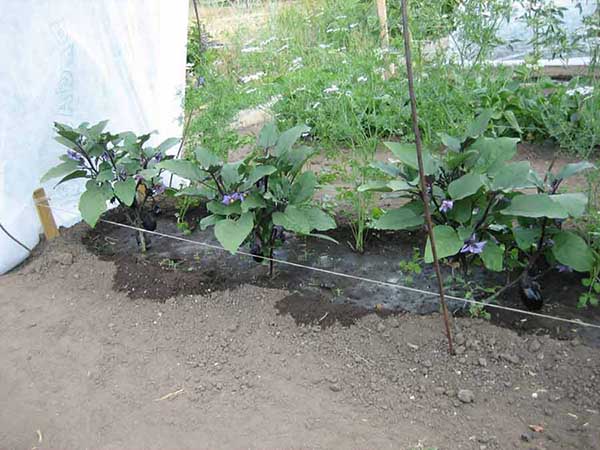
How often should you water the eggplant?
- The soil should always be slightly damp, in other words, it should not dry out, but stagnation of moisture should not be allowed in any case. Therefore, you need to water every 3-5 days.
What if you come to the dacha only for the weekend?
- In this case, only mulching.
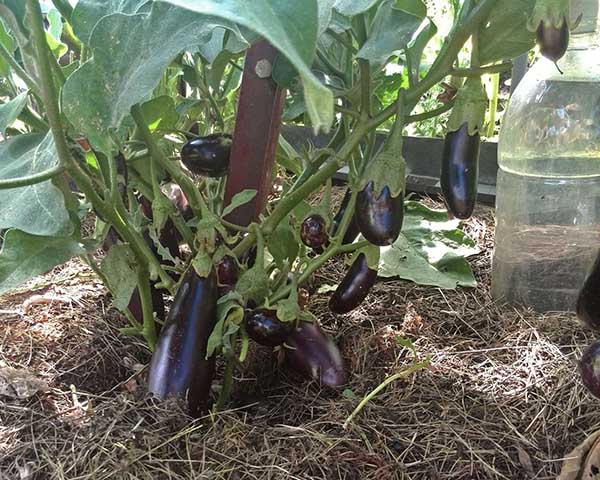
If the eggplants are mulched, then watering once a week is quite enough.
If the leaves of the plant begin to fade, although you will water it regularly, in other words, the problem will not be in the absence of watering, then, most likely, the eggplants began to be affected by fusarium wilting (root rot).
In September, when the temperature is already low enough, you need to stop all watering.
In cold, moist soil, the plant is most susceptible to various root rot.
Mulching
Important! Never mulch seedlings immediately after planting! Only after 7-10 days.
Why mulch eggplant?
- Under the mulch, the soil is always loose, there are no weeds, which means that you do not need to additionally loosen and weed.
- Mulch perfectly retains moisture, which means that you will have to water much less often.
How can you mulch:
- Freshly cut grass.
- With straw.
Advice! It is highly advisable to renew the mulching layer as the grass dries.
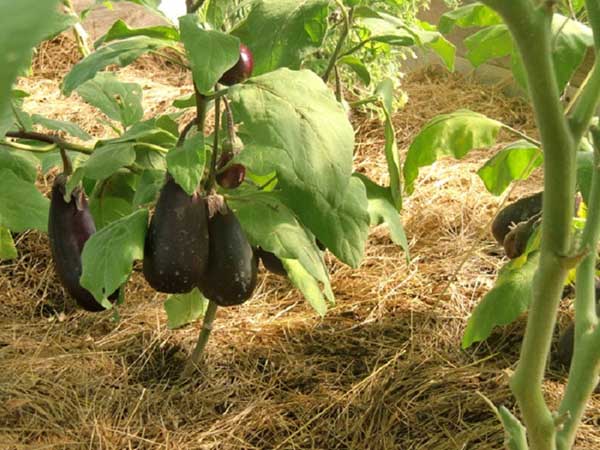
But hay is a very unfortunate option.
Often, mulching with grass and sawdust promotes the reproduction of wood lice and slugs.
If wood lice do no harm to plants, since they mainly feed on semi-rotten organic matter, then slugs can gnaw the leaves. And with them you can and should fight.
Loosening and weeding
If you do not want to mulch, then after each watering or rain (when grown in the open field) it is very desirable to carry out shallow loosening so that a hard earth crust does not form on the soil surface. And, of course, keep an eye on the weeds by regularly weeding the beds.
Top dressing
Eggplant is one of the most nutritionally demanding vegetable crops.
There is even an opinion that they are needed water not with plain water, but always with the addition of fertilizer.
However, it must be borne in mind that eggplant tend to fatten, so nitrogen fertilizers it is recommended to use it only in the initial growing season (before flowering and ovary formation).
If you continue to water the eggplants with nitrogen fertilizers, then the bushes will grow, and there will be very few ovaries.
The scheme for feeding eggplants in a greenhouse or open field:
- Before the active flowering phase, more nitrogen. Nitrogen fertilizers — urea, ammonium nitrate (all mineral), infusion of mullein, bird droppings, nettle (green fertilizer).
- During flowering (for better tying) - boron (boric acid).
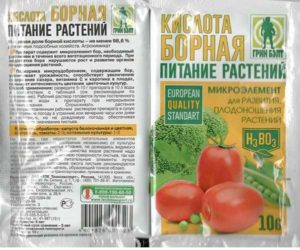
- During fruiting (for pouring fruits) - potash fertilizers... Potassium sulfate, potassium magnesium (all mineral), wood ash (organic).
It will be just fine if you feed the eggplant during this period (ripening) potassium monophosphate.
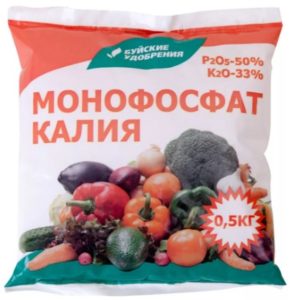
You can use specialized fertilizers for feeding eggplants and other nightshade crops:
- Gumi-Omi "Tomato, eggplant and pepper";
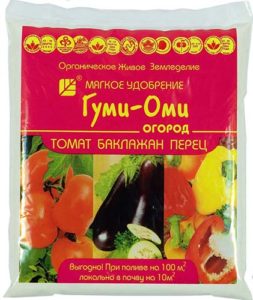
- Agricola "For tomatoes, peppers, eggplants", etc.
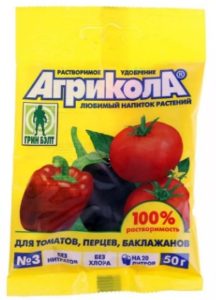
Pollination
If the plants are cold (for example, in early June, when the weather can be unstable), then problems with pollination and the formation of ovaries may begin.
Often problems with fruit setting arise it is in the open fieldeven though bees and bumblebees fly around the plants.
You can also try hand pollinate flowers with a brush for drawing or with a cotton swab, in other words, resort to artificial pollination.
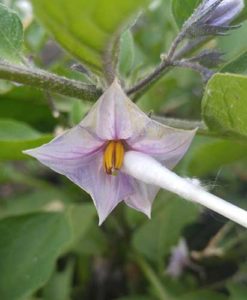
Can spray plants honey solution to attract pollinators.
As an option, handle in the flowering phase with special preparations (stimulants of fruit formation), eg, Bud or Ovary.
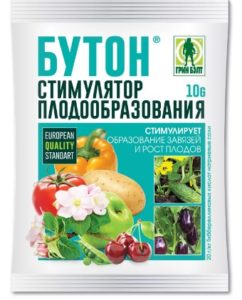
Or you can use the good old boric acid.
But it is better create optimal conditions for growing eggplants. Namely put them in a greenhouse or, for example, initially put some straw or freshly cut grass in the holeso that it everything has gone and the root system of the plant It was warm.
Shaping and pinning
Advice! The site already has a separate material about how to shape and pinch eggplant bushes.
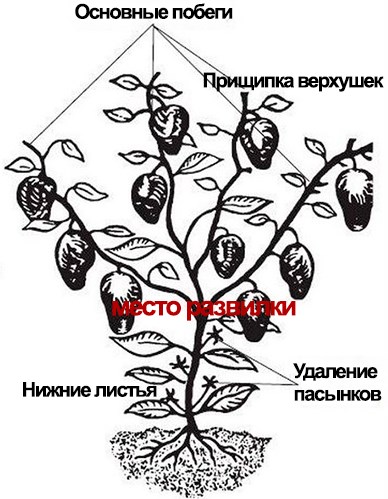
Diseases and pests of eggplant
Leaves wither (root rot)
Many summer residents are faced with the fact that, unexpectedly, the leaves of the eggplant begin to wither. Just yesterday the plant was vigorous, and today wilting has begun.
As a rule, this is caused by root rot (= the root system fails, namely the plant stops receiving nutrition), which may have various pathogens (fusarium wilting, verticillary wilting).
In order for this not to happen, it is necessary to carry out preventive treatments (spilling under the root) of eggplants with fungicidal preparations, preferably of biological origin (for example, Fitosporin, Alirin-B, Gamair, Glyokladin, Trichocin, Trichodermin, etc. based on "Trichoderma").
If there are no biological ones, then you can use chemical ones: Maxim, Vitaros, Fundazol.
The first treatment should be carried out before planting seedlings, shedding the soil with one of these preparations, and the second and subsequent treatment every 10-14 days.
The ovary dries and falls off
Often, many summer residents are faced with the fact that after flowering, there are simply no flowers (ovaries) left on the eggplants, they all dry up and fall off. What does that mean?
The reasons may be as follows:
- intense heat (above +33 .. + 35) or, on the contrary, too cold (below +15 degrees), sudden temperature changes at night and during the day;
Advice! If it is very sunny and warm, then you can shade the greenhouse by throwing a shading mesh over it.
- lack of watering or long breaks between waterings;
- root diseases (root rot, see paragraph above).
Spider mite
If you notice that the eggplant leaves have brightened and small specks (dots) have appeared on them, then, most likely, spider mites have worked (they suck juice from the leaves).
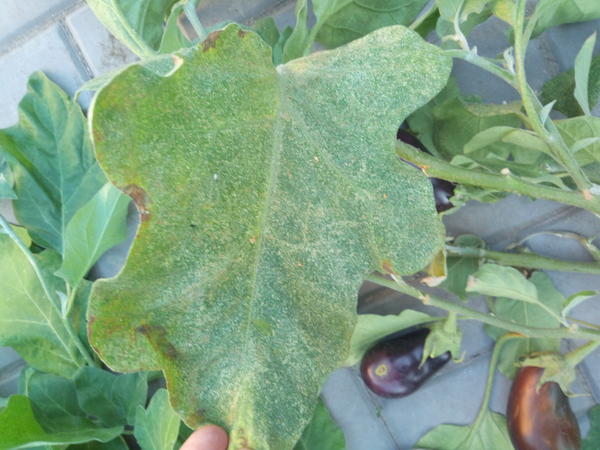
And if the weather was also hot enough, then the affected leaves can instantly turn yellow, dry out and fall off.
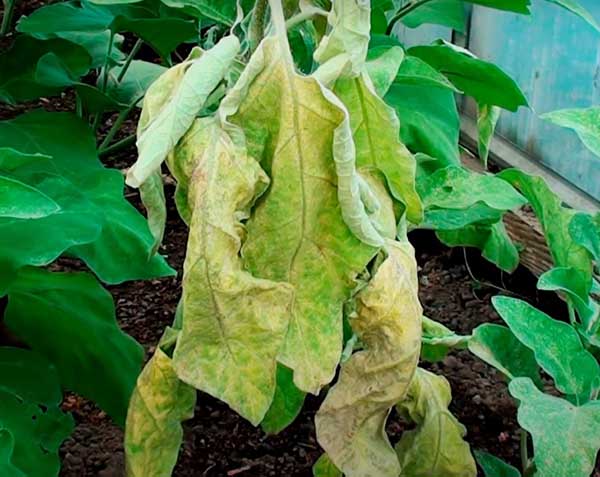
Most favorable conditions for the appearance of a spider mite is dry and warm air in the greenhouse (low humidity and high temperature).
It is quite difficult to fight a spider mite, but it is possible to carry out treatments with the following insecticidal acaricidal preparations (agents for combating ticks and other pests).
Chemical:
- Tiovit Jet (Colloidal Sulfur);
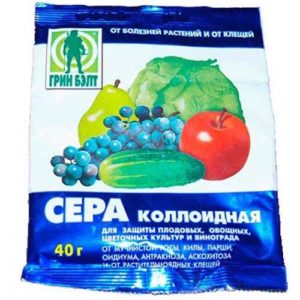
- Fufanon-Nova;
- Karate Zeon.
Biological:
- Fitoverm (Forte is optimal);
Aktofit and Kleschevit are complete analogues of Fitoverm.
- Akarin;
- Bitoxibacillin.
By the way! Generally measures to combat spider mites on cucumbers in the greenhouse will completely match, so we advise you to read relevant material.
Whitefly
If you notice that the eggplant leaves have appeared white midges (butterflies)then it is probably a whitefly.
Do you ever grow eggplants in the same greenhouse with tomatoes?
Advice! The site already has material about how to deal with whitefly on tomatoes in a greenhouse (everything is the same for eggplants).
Colorado beetles
Often, eggplants are attacked and literally stuck around colorado beetles... And they can downright eat all the bushes at the root.
Get rid of bugs you can use chemical insecticides (pest drugs), for example, Corado or Commanderby processing them before flowering, and after - biological, for example, Fitoverm or Bitoxibacillin.
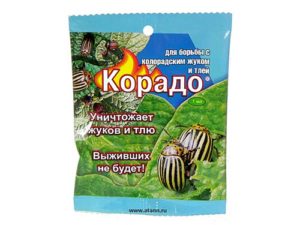
Soil pests
Gnaw and even gnaw the stems of eggplants can bear.
You can fight this soil pest with the help of special insecticidal preparations (by introducing their granules into the soil to a depth of 3-5 cm near the plant root), such as Medvetox, Grizzly, Thunder, etc.
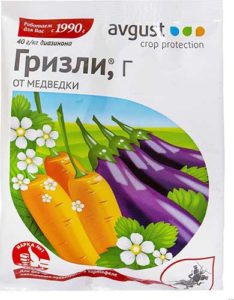
Advice! More details about ways to deal with a bear read in this article.
When to harvest eggplant (how to determine ripeness), storage methods
How to determine the ripeness of an eggplant?
Of course, look at the size and color of the skin. When the fruits look as stated in the description of the variety (= the surface becomes glossy), then you can pick.
The main thing is not to overexpose the eggplants on the bush. Harvest on time!
By the way! If you collected on time eggplant, and they still bitter, then, most likely, the vegetable in the process of its development suffered from a lack of moisture. Actually, because of this, solanine was developed in him.
The point is not even that there will be a lot of seeds inside (which will also become dark) and their color will fade (the eggplants “turn brown”), the taste will deteriorate noticeably, the pulp will become tough and can start bitter.
Note! The site already has an article about when to harvest eggplant and how to store it.
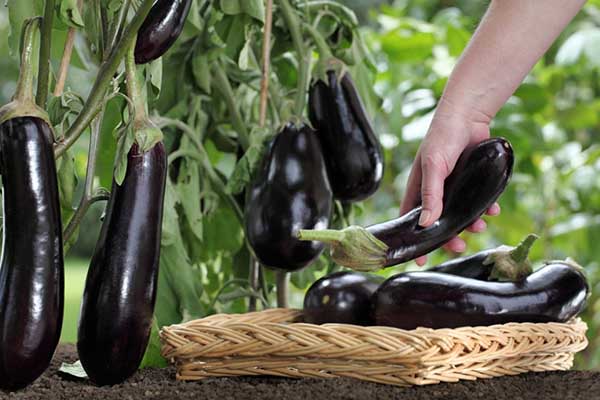
Well, now you know all the basic rules and secrets of growing eggplant in a greenhouse and open field. You just have the most important thing left - to apply the knowledge gained in practice. Good harvests and delicious blue ones!

